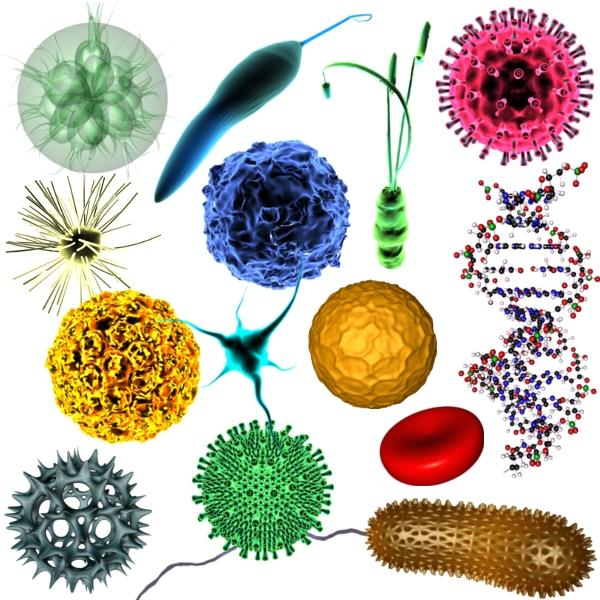Microbiology
Microbiology is the study of microscopic organisms, which can be defined as any living organism which is either a single cell (or unicellular), a cell cluster, or has no cells at all (or acellular).This includes organisms like eukaryotes, such as fungi and protists, and prokaryotes. Viruses and prions, though not compulsorily classed as living organisms, are also studied. Microbiology characteristically includes the study of immune system, or immunology. In general, immune systems interact with the pathogenic microbes; these two disciplines intersect that is why a number of colleges offer a paired degree like "Microbiology and Immunology".Microbiology is a wide term that includes virology, mycology, bacteriology, immunology parasitology, and other branches. A microbiologist is specialist in microbiology and the related topics.
Microbiological procedures usually should be aseptic, and employ variety of tools such as light microscopes with the combination of stains and dyes. The most usually used stains are called as basic dyes, and are composed of positively charged molecules. The two types of basic dyes are simple stains and differential stains. Simple stains comprise of one dye and identify the shape and multicell arrangement of the bacteria. Safranin, carbolfuchsin, methylene blue, and crystal violet are the most frequently used stains. Differential stains on the other hand, employ two or more dyes which help us to distinguish between two or different parts of the organism. Types of differential stains are gram, flagella, negative, endospore and Ziehl-Neelsen acid fast. Particular constraints apply to specific fields of microbiology, like parasitology, which utilizes the light microscopy, while microscopy's utility in bacteriology is limited because of the similarity in many cells' physiology. Certainly, most of the means of differentiating bacteria is generally based on growth or biochemical reactions. Virology has little need for light microscopes, relying on almost whole molecular means. Mycology relies on all the technologies the most evenly, from macroscopy to the molecular techniques.

Microbiology is researched actively, and the field is continuously advancing. Research work in the microbiology field is expanding, and in upcoming years, we should see the demand for the microbiologists in the work force increase. It is estimated that only about one % of the microorganisms present in the given environmental sample are culturable and the number of bacterial cells and species on Earth is still not possible to be explored, recent estimates indicate that it can be very high (5×1030 on Earth, unknown number of species). However microbes were observed over three hundred years ago, the limited determination, quantitation and description of its functions are far to be complete, given the diversity detected by genetic and culture independent means.